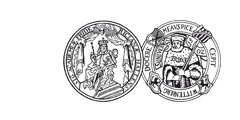Current publications
How to access a password protected publication:
Because of copyright restrictions of some publishers, only interested colleagues may download the paper by using the appropriate password, which is the scientific name for the genus honeybee. You will then be able to download the authors copy of the publication. By downloading you agree not to sell or reproduce the article or any part of it for commercial purposes (i.e. for monetary gain on your own account or on that of a third party, or for indirect financial gain by a commercial entity).
The arrow link will direct you to the original publication of the publisher. The PDF link will guide you to a password protected author's copy.
In case of problems, do not hesitate to contact us.
Find publications of Robin FA Moritz (Emeritus) and the MolEcol-Research Group here
2018
Aumer D, Mumoki FN, Pirk CWW, Moritz RFA (2018): The transriptomic changes associated with the development of social parasitism in the honeybee Apis mellifera capensis. Sci Nat 105: 22.
Aumer_etal_2018_SciNat.pdf
(1.2 MB) vom 22.03.2018
Conlon BH, Frey E, Rosenkranz P, Locke B, Moritz RFA, Routtu J (2018): The role of epistatic interactions underpinning resistance to parasitic Varroa mites in haploid honey bee (Apis mellifera) drones. JEB .
Conlon_etal_2018-JEB.pdf
(328.9 KB) vom 30.05.2018
Erler S, Lewkowski O, Poehlein A, Forsgren A (2018): The curious case of Achromobacter eurydice, a Gram-variable pleomorphic bacterium associated with European foulbrood disease in honeybees. Microb Ecol , (early online).
Erler_etal_2017_MicrobEcol.pdf
(13.1 MB) vom 21.06.2017
Kurze C, Le Conte Y, Kryger P, Lewkowski O, Müller T, Moritz RFA (2018): Infection dynamics of Nosema ceranae in honey bee midgut and host cell apoptosis. JIP 154: 1-4
Kurze_etal_2018_JIP.pdf
(216.9 KB) vom 22.03.2018
2017
Aumer D, Allsopp MH, Lattorff HMG, Moritz RFA, Jarosch-Perlow A (2017): Thelytoky in Cape honeybees (Apis mellifera capensis) is controlled by a single recessive locus. Apidologie 48: 401-410.
Aumer_etal_2017_Apido.pdf
(16 MB) vom 25.01.2017
Pieplow JT, Brauße J, van Praagh JP, Moritz RFA, Erler S (2017): A scientific note on using large mixed sperm samples in instrumental insemination of honeybee queens. Apidologie 48: 716-718.
Pieplow_etal_2017_Apido.pdf
(4.3 MB) vom 21.06.2017
2016
Aurori AC, Bobis O, Dezmirean DS, Marghitas LA, Erler S (2016): Bay laurel (Laurus nobilis) as potential antiviral treatment in naturally BQCV infected honeybees. Virus Res 222: 29-33.
Aurori_etal_2016_VirusRes.pdf
(361.4 KB) vom 11.08.2016
EPILOBEE Consortium et. al. (2016): Risk indicators affecting honeybee colony survival in Europe: one year of surveillance. Apidologie 47 (3): 348-378.
Epilobee Consortium_etal_2016-Apido.pdf
(2.4 MB) vom 10.10.2018
Erler S, Moritz RFA (2016): Pharmacophagy and pharmacophory: mechanisms of self-medication and disease prevention in the honeybee colony (Apis mellifera). Apidologie 47:389-411.
Erler_Moritz_2016_Apidologie.pdf
(698.3 KB) vom 11.08.2016
Kurze C, Routtu J, and Moritz RFA (2016): Parasite resistance and tolerance in honeybees at the individual and social level. Zoology 119: 290-297.
Kurze_etal_2016_Zoology.pdf
(711.7 KB) vom 04.04.2016
Lattorff HMG, Popp M, Parsche S, Helbing S, Erler S (2016): Effective population size as a driver for divergence of anantimicrobial peptide (Hymenoptaecin) in two common European bumblebee species. Biol J Linn Soc 119(2): 299-310.
Lattorff_etal_2016_BiolJLinnSoc.pdf
(219.8 KB) vom 21.06.2017
Margaoan R, Zahan M, Marghitas LA, Dezmirean DS, Erler S, Bobis O (2016): Antiproliferative activity and apoptotic effects of Filipendula ulmaria pollen against C26 mice colon tumour cells. J Apic Sci 60: 135-144.
Margaoan_etal_2016_JApicSci.pdf
(1003.2 KB) vom 11.08.2016
Moritz RFA, Erler S (2016): Lost colonies found in a data mine: Global honey trade but not pests or pesticides as a major cause of regional honeybee colony declines. Agr Ecosyst Environ 216: 44-50.
Moritz_Erler_2016_ AgricEcosysEnviron.pdf
(765.4 KB) vom 09.10.2015
Rueppell O, Aumer D, Moritz RFA (2016): Ties between ageing plasticity and reproductive physiology in honey bees (Apis mellifera) reveal a positive relation between fecundity and longevity as consequence of advanced social evolution. Curr Opin Insect Sci 16: 64-68.
Rueppell_etal_2016_CurrOpinInsectSci.pdf
(307.6 KB) vom 21.09.2017
2015
Aurori A, Erler S, Bobis O, Dezmirean DS, Mărghitaş LA (2015): Screening for antivirals using an in vivo honeybee - BQCV model system. J Biotechnol 208 (Supplement): S27-S28.
Aurori_etal_2015_J-Biotechnol.pdf
(75.5 KB) vom 25.11.2015
Barribeau SM, ..., Erler S, Helbing S, Lattorff HMG, et al (2015): A depauperate immune repertoire precedes evolution of sociality in bees. Genome Biol 16: 83.
Barribeau_etal_2015_GenomeBiol.pdf
(2.5 MB) vom 06.05.2015
Hönicke C, Bliss P, Moritz RFA (2015): Effect of density on traffic and velocity on trunk trailsof Formica pratensis. Sci Nat 102:17
Hönicke_etal_2015_SciNat.pdf
(1.1 MB) vom 22.04.2015
Kurze C, Le Conte Y, Dussaubat C, Erler S, Kryger P, Lewkowski O, Müller T, Widder M, Moritz RFA (2015): Nosema tolerant honeybees (Apis mellifera) escape parasitic manipulation of apoptosis. Plos One 10: e0140174.
Kurze_etal_2015_PLOSone.pdf
(1.9 MB) vom 09.10.2015



